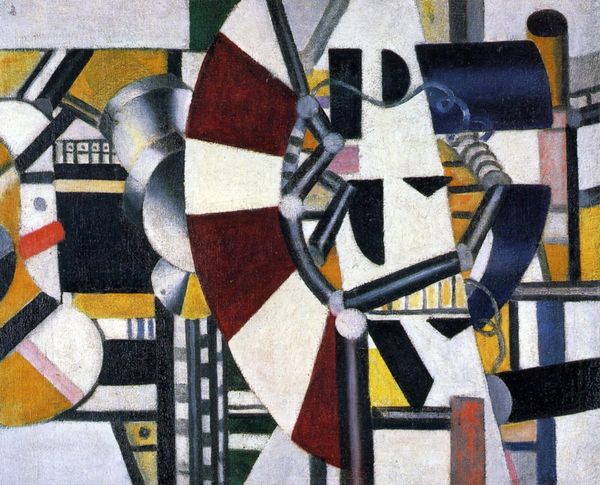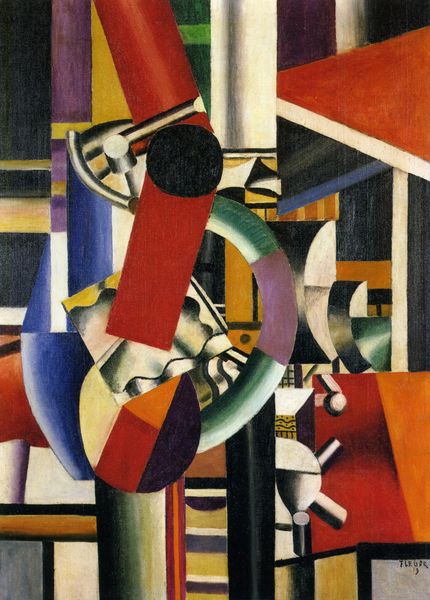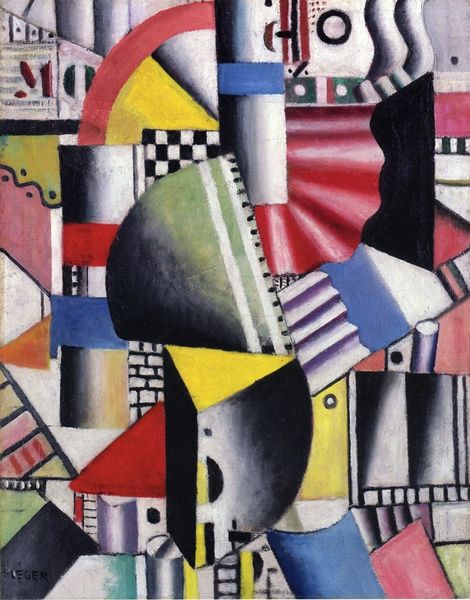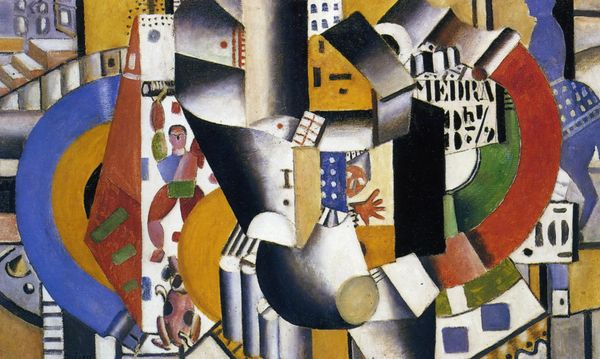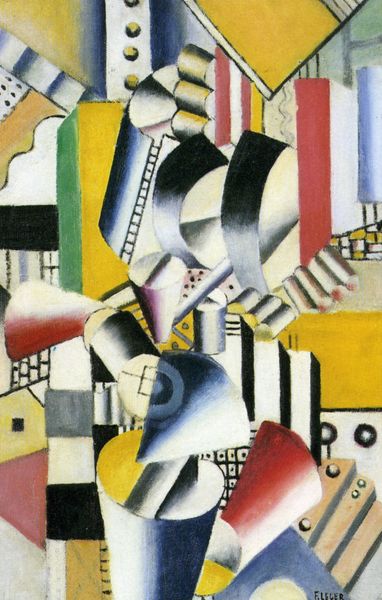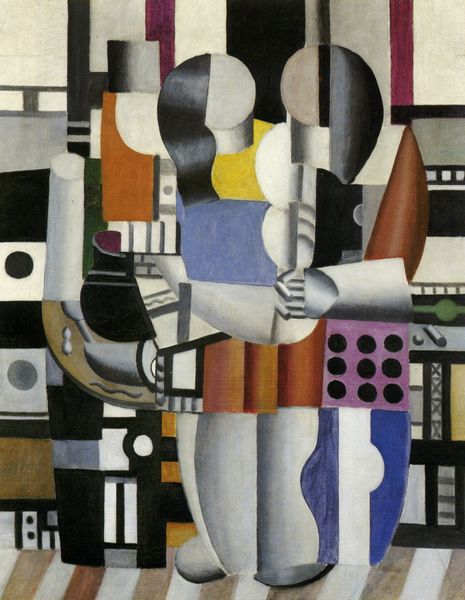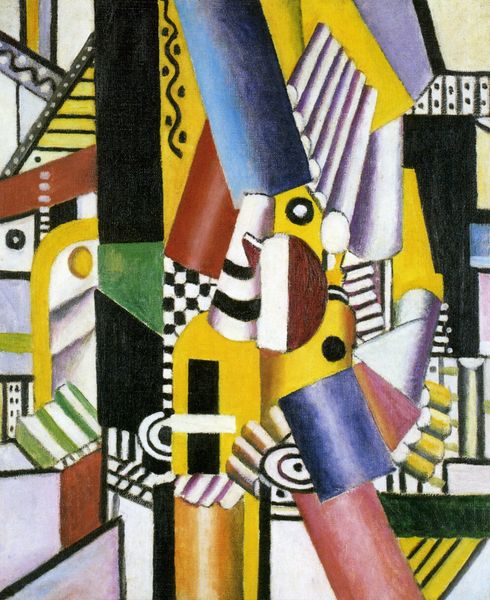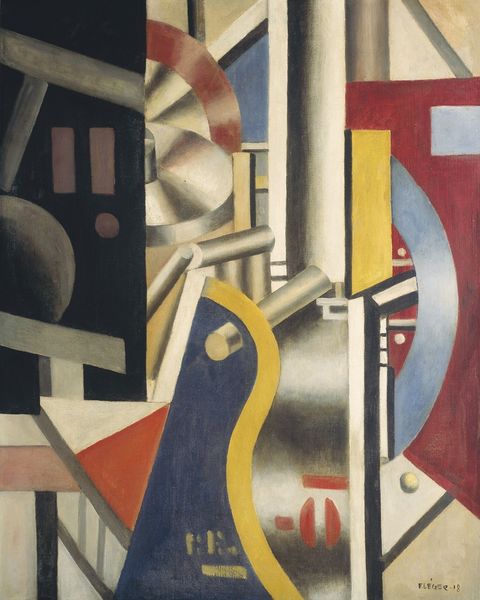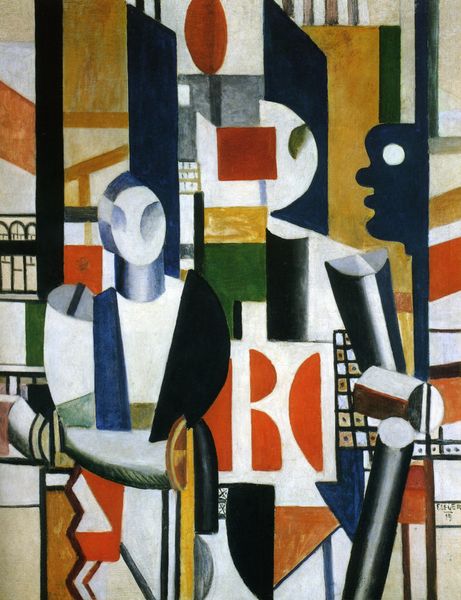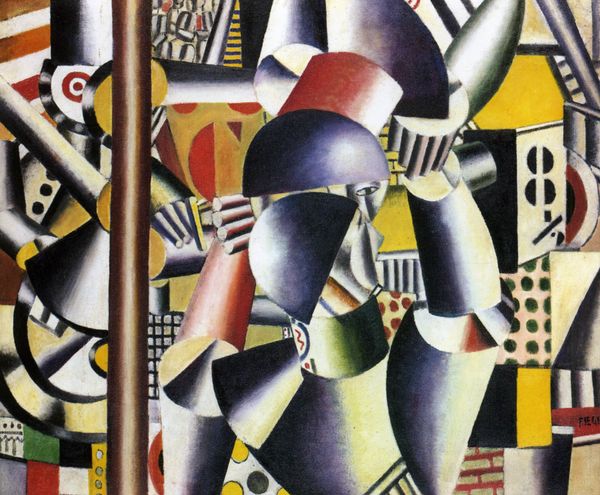
Copyright: Public domain US
Curator: Standing before us is Fernand Léger's "The Man with the Cane," created in 1920. Léger employed mixed media techniques, primarily oil paint, to bring this Cubist-inspired portrait to life. Editor: It strikes me as very… architectural, even mechanical. The flattened forms and bold colors – that saturated orange and assertive black – create a dynamic tension. What kind of materials were typical in his work? Curator: Léger often incorporated industrial materials and techniques into his artistic process. He embraced mass production, finding beauty and potential within its standardized forms. You can almost see that sensibility informing the rigid geometric structure. Editor: I can definitely see that connection, particularly in the use of cylinder and rectangles. There is also an intriguing combination of softness and harshness in the palette. This "man" seems less an individual and more of an emblem. Is that how you read it? Curator: Precisely! By fragmenting and reassembling the figure into geometric shapes, Léger is less interested in portraying a specific individual and more concerned with capturing the spirit of the modern age— the machine age, specifically. The cane itself— traditionally a symbol of status or support —here becomes almost an aesthetic accessory or building block in this constructed identity. It represents transition. Editor: So the cane acts as a marker of transformation, a way to access or even dictate modernity? A stylized approach towards portraiture! Curator: Very astute! Léger himself had seen war's impact and understood it was an age of machinery, both terrifying and exhilarating. So "the man," anyone and everyone, is interacting with or is even part of, a mechanized environment. That flattening also challenged notions of artistic skill, moving away from detailed representation and pushing viewers to consider what we value as ‘art’ versus utilitarian objects or labor. Editor: That re-evaluation makes perfect sense. It moves art from simply reflecting the world to challenging our understanding of it through shape, process, and even placement in society. A powerful painting on those counts. Curator: It is. Léger prompts us to consider the artistic intention and how he elevates these "utilitarian" methods into high art. The painting's very construction carries his message.
Comments
No comments
Be the first to comment and join the conversation on the ultimate creative platform.

